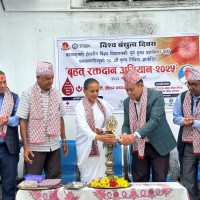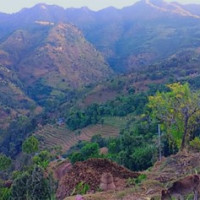- Saturday, 23 August 2025
Gharial nests found in Kailali’s rivers
By Avinash Chaudhary,Dhangadhi, Apr. 24: Rare gharials have been found preparing to lay eggs in various rivers in Kailali. They have started building test nests in the Karnali, Mohana and Patharaiya rivers.
According to dolphin conservationist Bhojraj Dhungana, monitoring at various riverbanks of all three rivers has led to the discovery of 16 nests, including one with eggs.
“Gharials have begun building nests to lay eggs,” said Dhungana. Test nests have been spotted in several locations along the rivers. The animals will lay eggs in suitable spots with proper conditions and good sand, he informed.
According to Dhungana, this year the highest number of test nests (seven) has been found in the Karnali River. Similarly, in the Mohana River, three nests each have been found at Halona Baba Ghat and Himmatpur Ghat in Bhajani Municipality. One nest was recorded at Himmatpur.
Likewise, three test nests have also been found in the Patharaiya River this year. “There might be more nests in other places,” added Dhungana, who is also the chairperson of Dolphins Aquatic and Biodiversity Nepal.
A nest of a mugger crocodile was also found at Kusum Ghat along the Mohana River. In the last three years, gharials have been nesting and hatching young in Kailali. Last year, gharials hatched young from three nests in the Karnali and two in the Patharaiya River.
A total of 124 live hatchlings were recorded from five nests. However, eggs from one nest in the Patharaiya River failed to hatch.
Female gharials reach reproductive maturity around the age of 9 or 10. They usually lay eggs around March/April following mating in December/January.
Gharials dig nests in sandy riverbanks, laying up to 40 eggs at a time. The female then buries the eggs and returns to the water, periodically returning to check the nest until the hatchlings emerge.
With the right temperature, the eggs hatch naturally within 60 to 90 days. Once hatched, the mother carries the babies on her back to the water to feed and raise them.















